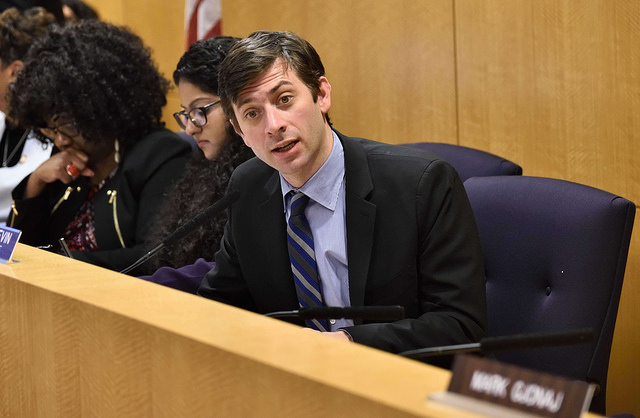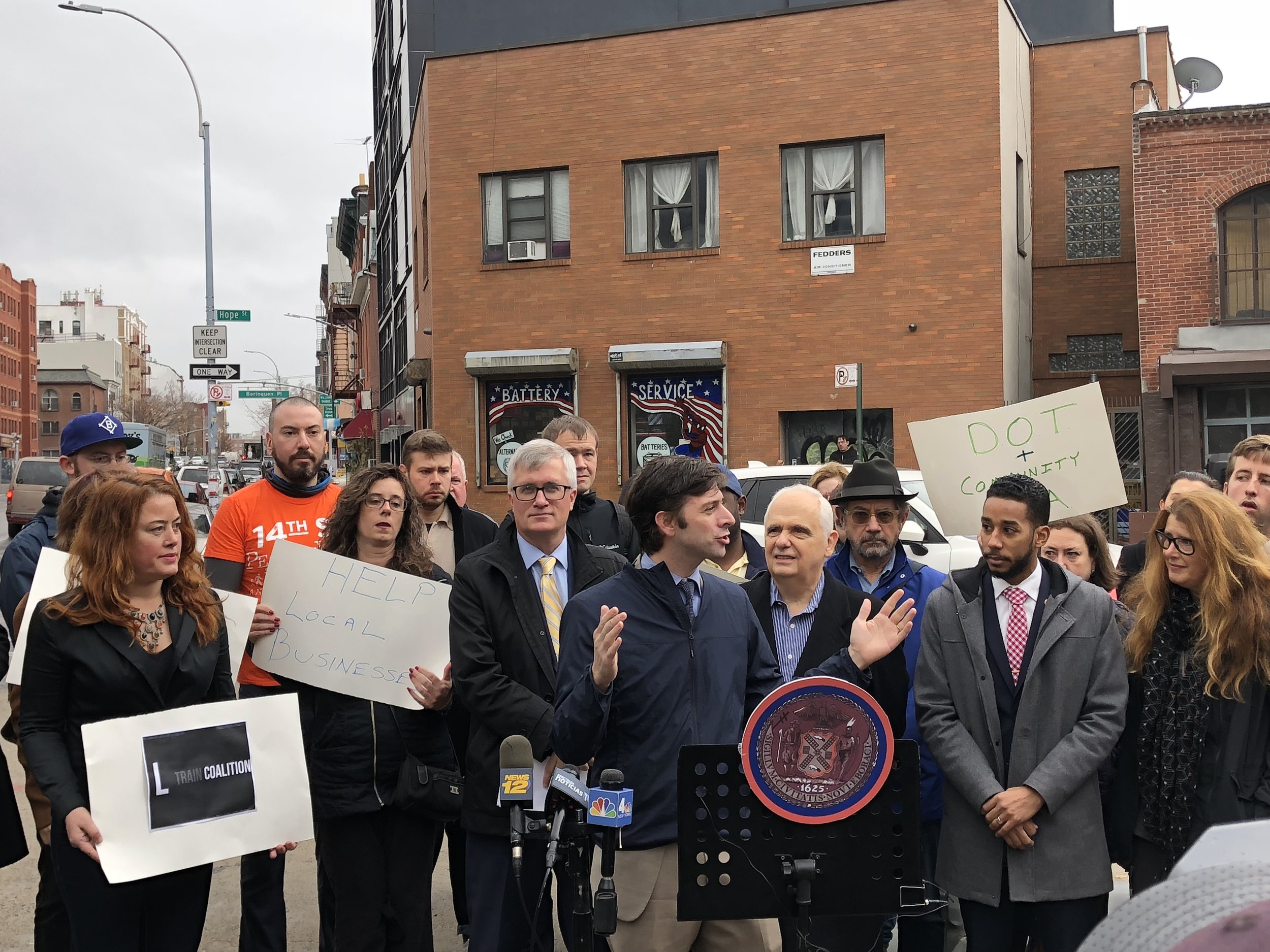CITY COUNCIL MEMBERS STEPHEN LEVIN AND RAFAEL ESPINAL INTRODUCE LEGISLATION TO ADDRESS M.A.R.C.H. NIGHTLIFE RAIDS
/Council Members, Nightlife Venue & Business Owners, and Community Advocates Come Together To Improve Accountability and Transparency of Multi-Agency Responses to Community Hotspots (MARCH)
NEW YORK, NY—Today, New York City Council Members, led by Stephen Levin and Rafael Espinal, nightlife advocates and small business owners joined in City Hall Park to introduce legislation to bring oversight and accountability to the Multi-Agency Responses to Community Hotspots (M.A.R.C.H.) operation.
Nightlife advocates and local businesses have shared serious concerns about operations conducted by the New York City’s M.A.R.C.H. Task Force. Coordinated by the NYPD, the interagency Task Force is comprised of representatives from the the Fire Department, Department of Health and Mental Hygiene, State Liquor Authority, Department of Environmental Protection, and Department of Buildings. The Task Force conducts enforcement operations in response to a business’ community complaints. However, business owners receive minimal information on how and why operations are conducted and report that the Task Force regularly conducts late night raids to harass venues and sometimes shutdown establishments.
“As a business owner who has focused primarily on initiatives which add to the vibrancy, education and advancement of our neighborhood; the MARCH on Friends and Lovers was not only extremely intimidating but it undermined all of the efforts we've put into community building. We respect that everyone needs to do their job but these organizations can regulate with respect, transparency and without intimidation. It's clear that fines have take the place of constructive conversations,” said Diana Mora, owner of Friends and Lovers.
“We came to this country and chose to go into business to create a better life for our family and the people in our community. Many business owners would agree that the lack of awareness surrounding certain good business practices, could come at a cost. Sometimes, you end up in trouble or hit with big fines for things you had no idea existed! We are happy to comply with all laws and prefer to practice good business. However, it’s very discouraging when your mistakes —especially the ones you’re not even made aware of— are criminalized. It’s certainly a dream killer. If a complaint is made against us, or we make a mistake, we have no problem collaborating with the appropriate agencies to cure any issues. When inspection matches occur, not only does it hurt us, but it also causes residents and patrons to mistrust enforcement officers. That’s the very energy that we do not want created because we rely on agencies such as the NYPD to protect us, not cause a divide,” said Nola Rodney, owner of the Hills Restaurant and Bar.
Today’s legislation proposed by Council Member Stephen Levin and Rafael Espinal Jr. will bring much-needed transparency to this process and support for local businesses. Without accountability, venue owners report the Task Force issues dozens of unrelated fines for the purpose of disrupting operations and harming venue owners.
“Shutting down an establishment for even one night can cost venue owners significant losses in revenue and put their business at risk,” said Council Member Stephen Levin. “I am proud to sponsor this much-needed legislation to shine a light on the MARCH Task Force’s enforcement practices and bring greater accountability to the process. Reports from businesses and community leaders about fear-inducing raids are concerning and today’s legislation will help city officials assess a more responsible path forward that balances community needs and respect for New York City’s beloved nightlife culture.”
“When I spearheaded the fight last year to repeal the Cabaret Law and establish the Office of Nightlife, my main goal was to bring nightlife out of the bureaucratic shadows. While we’ve already made significant strides, many venues still have concerns about the arbitrary enforcement practices of the Multi-Agency Response to Community Hotspots (MARCH), which have hurt their business and in some cases even led to closures. This bill will help us hold MARCH accountable and allow us to seek workable solutions that are sensitive to the needs of all stakeholders,” said Council Member Rafael Espinal.
"We advocate for safety and preservation of grassroots cultural spaces. The best way to achieve this is through building relationships of trust with all stakeholders. Venues and artists most times have great relationships with their local officers at the precinct level, but when the MARCH task force appears--with what is effectively a scary raid--it wreaks havoc on valuable and vulnerable community spaces. Enforcement must be fair, proportional and transparent. We need talks not raids," said Olympia Kazi, NYC Artist Coalition.
“In an era defined by Trump, where no city, person or institution feels untouched by corruption and mismanagement, it is the responsibility of the city of New York to show its citizenry what democracy can and does looks like; for too long MARCH has been a Stasi-like tool used to intimidate small business owners without recourse, often fining them out of existence and, losing jobs, investments and dreams while creating empty storefronts in the fallout... there is currently no way to contact or to find MARCH, elected officials believe it no longer exists, meanwhile it operates in the shadows of our democracy,” saidRachel Nelson, The Secret Project Robot.
“Our small local businesses are the heart of NYC. These establishments bring communities together in celebration and should not be subjected to late night raids that could seriously affect their businesses causing workers, patrons, and entire neighborhoods livelihoods to be affected. We must work to ensure these establishments remain places that people are comfortable, safe, and enjoying the atmosphere provided,” said Marti Gould Cummings, Co-Producer of “Shade: Queens of NYC” and President of Hell’s Kitchen Democrats.
WHAT: Press Conference to introduce oversight legislation on the NYPD’s interagency M.A.R.C.H. Task Force.
Nightlife advocates and local businesses have shared serious concerns about the Task Force’s nighttime raids, which scare businesses and can shut down bars and venues. Data will help City officials demystify M.A.R.C.H. operations and implement a transparent and equitable enforcement system for violations that does not put small businesses at risk of unnecessary closure.



















